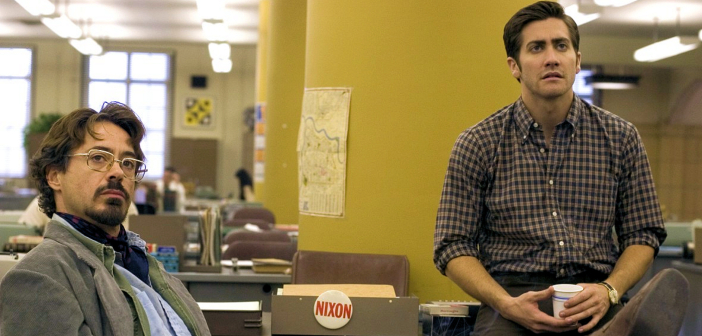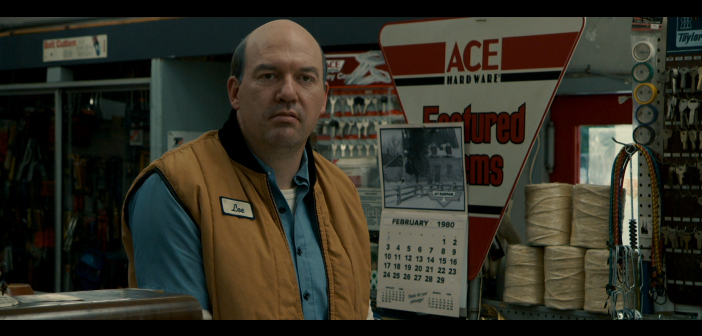10 Years on | How Zodiac Bookends Decades of Police Procedurals
The police procedural drama film has been around since the first motion-picture camera was invented. From Dirty Harry to TV’s The Bill right up to 2017’s Patriot’s Day the police procedural has always followed a formula. In March 2007 director David Fincher broke that formula with his film Zodiac. Before Zodiac police procedurals felt necessary. It’s always good to sit down and watch two detectives see through the dead ends and red herrings before they catch the killer. After Zodiac police procedurals felt decidedly unnecessary. In Zodiac the detectives retire, the killer dies of a heart attack and the real hero of the story is a cartoonist with an obsessive streak that borders on insanity.
Zodiac is real. More than the fact that it’s the true story of the hunt for California’s Zodiac Killer in the late 60s and early 70s. Zodiac is real in the sense that so much of it fits into the narrative of a police procedural and yet nothing ever really works out. Life isn’t fair and that is what makes Zodiac such a powerful film. Watching good men circle the drain as they fight against time to catch a killer who is as slippery as a bar of soap. Jake Gyllenhaal plays Robert Graysmith, a cartoonist at the San Francisco Chronicle and later author of the 1986 book Zodiac. Also attempting to solve the case are Paul Avery (Robert Downey Jr), a crime writer at the Chronicle, and San Francisco Police Department Detectives David Toschi (Mark Ruffalo) and William Armstrong (Anthony Edwards). Ten years ago, when the film came out critics praised it for its historical authenticity.

Fincher never misses a detail and neither does the team behind him. As the Zodiac Killer case progressed San Francisco evolved into the city many know it as today. This is reflected in the film’s limited use of special effects in recreating the San Francisco of the 60s, 70s and 80s. Style too evolves and the transition from ascots to turtlenecks is evoked by Casey Storm’s costume design. Victor Zolfo’s set design is impeccable as well from the offices of the Chronicle to the dingy trailers and dungeon-like basements of possible Zodiac suspects. Cinematographer Harris Savides’ work coupled with Fincher’s direction and Angus Wall’s editing bring this nightmare vision of reality to life more than anything David Fincher has ever done. It has more warmth than The Social Network, it is less oppressive than Seven and less ridiculous than Gone Girl or House of Cards. Fincher’s films are often hellish glimpses of worlds that bit more terrible than our own but Zodiac happened and that’s what makes it so frightening.
[pullquote]The scene is full of the trappings of classic horror. Fleischer is lit to appear like a crypt keeper and Gyllenhaal arrives at his door like a Gothic heroine, rain-drenched and begging for sanctuary.[/pullquote] There’s a scene towards the end of Zodiac. It’s only about four minutes long and in terms of plot progression it’s completely unnecessary. In terms of atmosphere however it’s vital and the film wouldn’t be the same without it. Gyllenhaal’s character Graysmith goes to meet a man named Bob Vaughn (Charles Fleischer) based on a tip-off that the Zodiac killer filmed the murders and gave them to Vaughn, his friend, for safe-keeping. Vaughn no longer has the purported film and the atmosphere of the scene is thick with tension. Graysmith is lead to the basement so Vaughn can doublecheck some movie listings. Graysmith hears movement upstairs and becoming scared leaves in a hurry.The scene is full of the trappings of classic horror. Fleischer is lit to appear like a crypt keeper and Gyllenhaal arrives at his door like a Gothic heroine, rain-drenched and begging for sanctuary. It is terror in the most primal, traditional sense. Like I said, completely unnecessary but without it Zodiac would be a lesser film.
Commitment is the key word when considering Zodiac. Fincher, writer James Vanderbilt and producer Bradley Fischer conducted their own months-long investigation into the Zodiac case. Gyllenhaal spent time with Graysmith, videotaping him in order to capture his tics and mannerisms. Mark Ruffalo met with David Toschi and was impressed by how the former detective remembered every detail of the case down to the victims’ clothing. As for Robert Downey Jr. as Paul Avery, well, debauchery was in Downey Jr’s blood at one stage just as it was in Avery’s. In real life there is a fine line between commitment and obsession and Zodiac emulates this to a tee.
Avery received threats to his life from the Zodiac Killer which drove him further into alcoholism and cocaine addiction leading to his death in 2000. Graysmith lost his job as a cartoonist as his obsession with finding the phantom murderer deepened. Eventually his marriage crumbled and his wife took custody of their three children. Gyllenhaal does a masterful job of playing what David Fincher called “the double-sided coin”. He is capable of great naivety and even greater insanity which are easily seen in Gyllenhaal’s iconic performances in Prisoners, Enemy and Nightcrawler. Mark Ruffalo plays Toschi as the hardboiled detective driven to the brink by the killer’s elusiveness. He is demoted, accused of being the Zodiac killer himself and eventually taken off the case entirely. Only Graysmith came away from the case with a modicum of satisfaction.

Arthur Leigh Allen is who the film convicts as the Zodiac Killer. He is a shuffling hulk of a man known to the police as a paedophile. But like every serial killer he looks normal. It is only when someone is convicted that the evil inherent within them becomes apparent. Show someone a mugshot of John Wayne Gacy or Ted Bundy and they just see an average white American man. Show someone with the foreknowledge of what these men did and they will see a monster. In the final shooting script of Zodiac Graysmith briefly meets Arthur Leigh Allen in a hardware store. The direction for the almost silent scene appears as follows:
“They stand three feet apart. Graysmith stares at him. Looking him in the eye… Allen’s smile fades. Realizing why Graysmith’s there. He frowns. His face transforms. And we see how terrifying this man really could be. They hold each other’s gaze for what seems like forever… And Allen finally looks away. Graysmith blinks. Once. Getting what he came here for. Knowing for sure. Graysmith turns and walks out of the store.”
Other films about unsolved murders have been made. The Black Dahlia, various Jack the Ripper interpretations and the St. Valentine’s Day Massacre were all police procedurals about one unsolved murder or another but none had the effect Zodiac did. The unfairness of it all is what should stay with viewers the most. Paul Avery’s decline, Detective David Toschi’s destroyed career and Robert Graysmith’s obsession all hurt in their own way. Arthur Leigh Allen died a day before the police could question him on further evidence on the Zodiac case in 1992. The seven victims the Zodiac claimed are what hurt the most however. Four men and three women who will never see conclusive justice done. The Zodiac Killer case will likely never be solved though it remains open in four districts in California. Thousands of man-hours have been poured into the case and hundreds of amateur and professional investigators have tried and failed to solve it.
Zodiac remains one of the most thrilling, detailed, and engrossing films ever made. Fincher’s attention to the bigger picture and the minutiae within it are what made it the success it was. It competed at Cannes and various Critics’ Circles awards but only ever won Best Director at the Dublin Film Critic’s Circle Awards. On its tenth anniversary Zodiac remains a reminder of the great police dramas that came before it and of the cold unfairness of life that we endure daily. Zodiac is a long snapshot of life and that is what makes it truly unforgettable.

